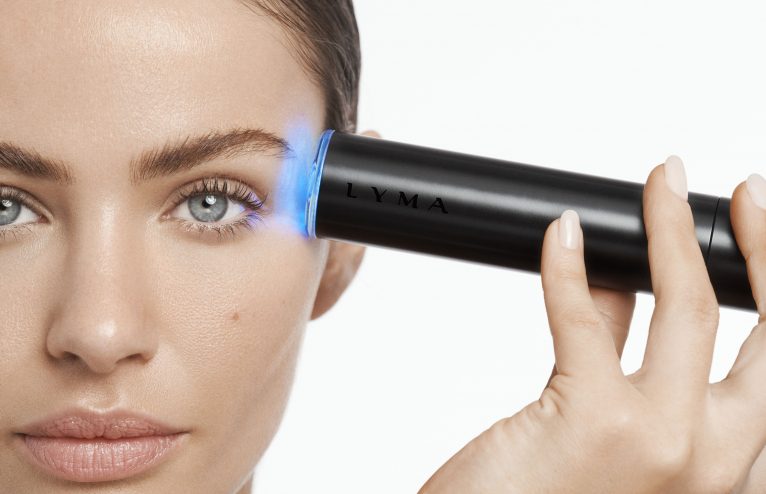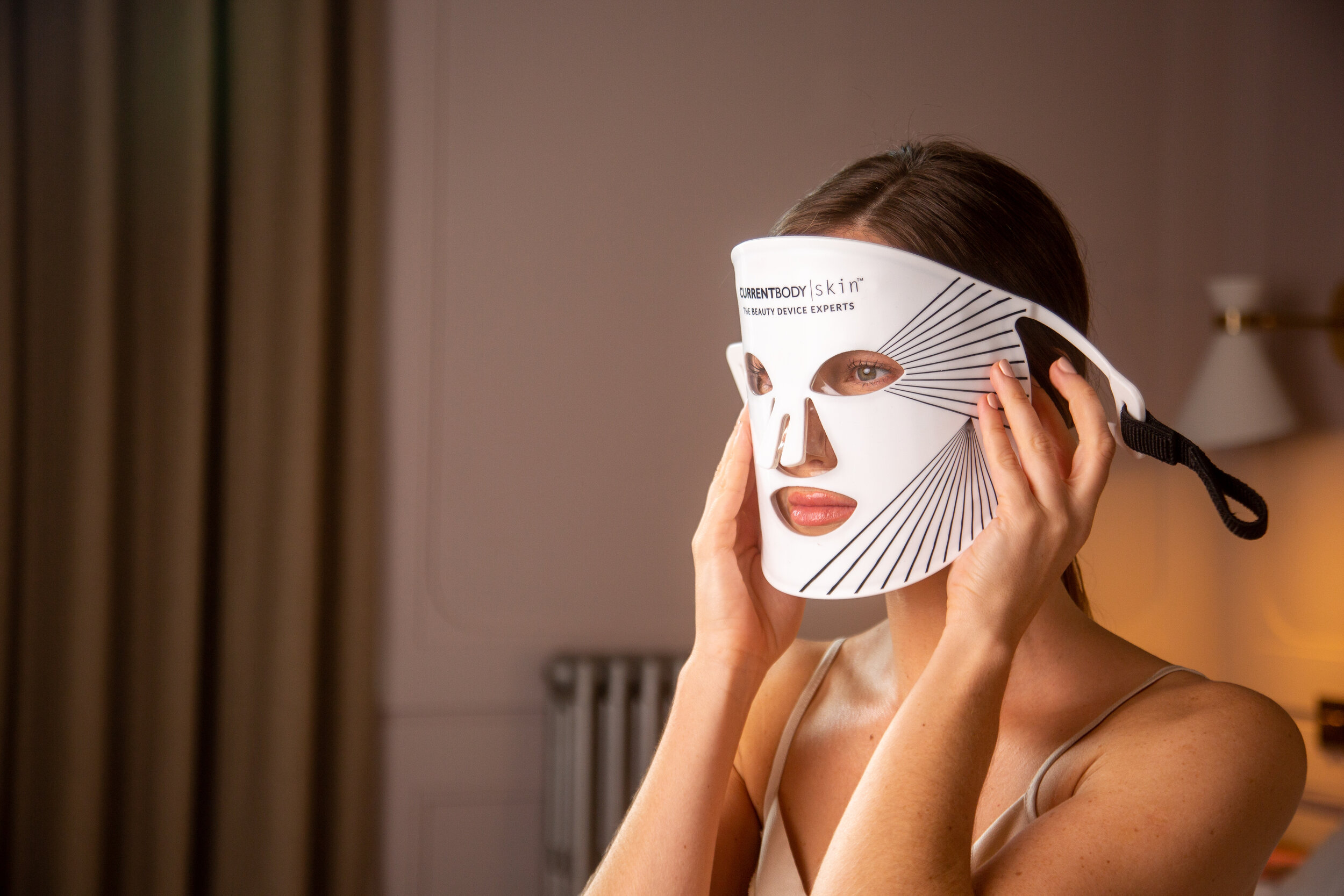At-home beauty devices and tools are more popular than ever, but are they the future of beauty maintenance or an unnecessary beauty fad?
CF investigated the growing trend, identifying the breadth of devices available on the market, how they work and the results they promise to provide.
The findings: there are at-home treasures to be uncovered that can give you the high-quality results you are looking for across skin, body and nails. But there are also fads to swerve, which may not only leave you disappointed and out-of-pocket, but put you at risk of more serious side effects.
Here’s what you need to know, as well as the at-home beauty devices to trust in your routine….
Why have at-home beauty devices become so popular?
From LED face masks, microcurrent and micro-needling devices, innovative makeup tools and at-home IPL hair removal, there’s never been so much beauty tech available on the market. In fact, according to market research, the beauty devices market size is expected to reach $311,095.1 million by 2030, with a growth rate of 21.3% during 2022–2030. If correct, that means beauty tech is likely to see some of the biggest growth trajectories in the beauty industry.
The reasons are multifaceted. First and foremost, there’s a practical reason: beauty technology is becoming better, safer and more cost-effective, across the board. That means it’s actually possible to bring device-based beauty directly to the customer’s front door.
But such investment in beauty tech innovations doesn’t occur without demand and, in beauty tech, demand is coming from both brands and customers. For beauty companies, it’s almost impossible not to fancy a slice of the beauty tech ‘pie’, especially considering the increasing ‘technification’ of the world we live in.
It’s noteworthy too, that all the biggest beauty corporations are getting involved. They have the money, but also an increasing need to compete with smaller future-gazing beauty brands that have destabilised the traditional beauty model; most famously by grabbing customer attention with direct-to-consumer and social media-based selling. One approach for traditional beauty companies is to form partnerships with up-and-coming tech companies and to create products benefitting from joint expertise. L’Oreal Group-owned YSL, for example, recently launched its first at-home lipstick shade maker – Rouge Sur Mesure, powered by Perso.
Credit: YSL Beauty
What are the benefits of at-home beauty devices?
For customers, a shift to at-home beauty devices places not only more control, but greater ease and the perception of better results, in the everyday customer’s hands. That’s been exacerbated by the societal changes caused by the coronavirus pandemic. While salons and clinics were legally unable to open, most of us will remember our DIY beauty attempts (with varying levels of success) and many turned to beauty tech to fill the void. That included both the practical – for example the popularity of Philip’s at-home IPL hair removal device, Lumea – and the results-driven, such as the boom in LED therapy.
“As with most areas of our lives, we’re adopting technology to enhance or supercharge our routines and the same can be said for the at-home beauty market,” explains Lucy Goff, the founder of at-home skin device, LYMA. “It is quite literally booming, and the trend shows no sign of slowing down. It comes down to two things – convenience and choice – and today’s beauty consumer wants both in abundance. At-home everything was pretty much the only solution during the COVID years, and this meant people turned to high-tech, clinic-grade devices when they couldn’t make it to their dermatologist. The after effect of this is that consumers now have the choice and confidence to intersperse at-home treatments with clinic treatments and the flexibility to maintain and treat skin concerns at-home.”
How do the different at-home beauty devices work?
The beauty (but also confusion) of beauty tech is that it’s a very wide-ranging industry, with each at-home beauty device working in slightly different ways. To help identify the best device for you, below are the leading skin and body concerns, alongside the best beauty tech devices that can help you with them.
FOR CLEANSING:
Arguably one of the first beauty device innovations, cleansing brushes were made especially popular by Clinique’s Clarisonic. The first few were known to be slightly aggressive, especially for sensitive skin, but new-age options are much more gentle. Many, like FOREO, use silicone bristles to gently but effectively clean your skin of makeup and dirt, with handy timing settings to ensure you are actually cleansing for long enough. (Did you know, you should be massaging your cleanser into your skin for at least 60 seconds).
FOR FINE LINES AND WRINKLES:
If fine lines and wrinkles are your main concern, you’ll be glad to know that this is where at-home beauty devices really thrive. LYMA, for example, is the first ever clinic-grade laser to be cleared by the FDA for use at home and uses low-level laser therapy to penetrate deeper into the skin for powerful results without the downtime of in-clinic treatments. Moreover, as detailed in our extensive LED face mask review, red light therapy is clinically proven to help reduce the appearance of fine lines, while microcurrent devices offer lifting and toning results, with consistent use, that outlast even your favourite facial massage treatments.
FOR BREAKOUTS:
For breakout and congestion-prone skin, beauty devices can provide both either harsh or non-invasive treatments to help keep your complexion clearer. Pore-suction devices that use suction and air pressure to physically clear out your pores were popular on social media for a time, but they can pull and mark the skin, especially on high settings. A gentler option are blue light therapy devices, including Dr Dennis Gross’ clever gadget and Solawave’s wand, which allow for targeted treatment of breakouts using the light’s antibacterial properties. Many LED masks also have a blue light setting to help treat the skin in this way.
FOR UNEVEN SKIN TONE AND TEXTURE:
Microneedling and microdermabrasion devices work by creating micro-injuries on the skin surface, which then triggers the skin to create more collagen and elastin as well as encouraging cell turnover (which slows as we age). The technique has long been used in-clinic with impressive results, but this category of at-home skincare tech should be used with caution as overly-aggressive usage can physically injure your skin. In particular, you should avoid using firm pressure or treating sensitive areas. What’s more, conditions such as hyper-and-hypopigmentation are notoriously tricky to treat without the guidance of an expert, so these tools are best used for smaller patches of uneven tone and texture.
FOR PERSONALISED BEAUTY:
One of the newest and most exciting spaces within the beauty tech movement is personalised beauty devices. While DIY beauty kits have been around for a while, and were often the most likely to end up getting dusty in a cupboard, the new era of devices benefit from the latest leading technologies. That means you can actually create your own targeted skincare at home, courtesy of Duolab and Lesielle, as well as your own makeup – with more innovations coming soon.
FOR FACIAL MASSAGE (AND BEYOND):
Facial massage is currently one of the most popular choices for in-clinic facial treatments and for good reason – it can provide a lifted and more defined appearance to your skin without invasive or painful intervention. Jade rollers and hand-held devices started the at-home trend, but tech is driving even better results. Face Gym, for example, has a wearable electrical muscle stimulation mask that targets the facial muscles for a true facial workout; ZIIP uses lifts and tones using nanocurrent technology; and Theraface combines massage with a host of other techniques, including light therapy for all-round skin rejuvenation.
FOR THE BODY:
The ‘skinification’ of bodycare, whereby the investment and focus given to facial skincare has pivoted towards the body too, and is driving at-home body solutions. LED therapy, for example, is now extending into body devices, such as for the neck and chest, although they do currently still struggle to measure up to the high-powered technology that can be safely used in-clinic. The same is true for your mani-pedi. Whereas the longevity of a gel manicure used to be limited to the salon, at-home gel manicure sets such as Mylee allow you to achieve a professional finish (if you have the skills or want to learn).
FOR SUPERCHARGING YOUR PRODUCTS:
Imagine if there was a way to make your favourite products work even harder than they do currently. Well in 2023 and beyond, that’s exactly what the newest focus in at-home beauty tech is trying to do. Devices such as Reduit and Droplette use patented diffusion and micro-misting technologies to push products deeper into your skin and hair, where they can have a better and longer-lasting effect. The aim: supercharge your routine without having to swap out your favourite products.
What are the limitations of at-home beauty tech?
Any beauty innovation that places great autonomy in the hands of customers should be celebrated, but there’s reason for hesitation too. The two main areas to consider are return-on-investment and safety, which can often be overlooked in the excitement of new tech launches.
In general at-home beauty tech is not as powerful as any in-clinic counterpart, despite being marketed as being able to treat the same concerns, which could be anything from wrinkles and acne to hair removal. It’s not that the devices can’t deliver on their claims (although more on that a little later), but when investing in the tech it’s important to recognise that results are likely to take longer to achieve and may require more frequent usage to maintain.
Furthermore, consistency is key when using at-home beauty tech. Although they offer the convenience of avoiding trips to the clinic or salon, such devices also place all responsibility on the individual to not only remember to use it, but to use it frequently and as directed in the instructions. Anecdotally, like children with new toys, it can be quite common that after the initial excitement of purchase, the drive to continue use (especially if visible results are slow to appear) can dwindle and devices are left to gather dust.
To avoid that, Goff advises: “try to find a way to incorporate your tech into your current routine, whether that’s using it as part of a skincare regime, while watching TV, when taking a train or bus to work, or while watching the kids at swimming class.” Taking the LYMA laser, as an example, “if you can spare 30 minutes, that’s plenty of time to cover your entire face. But if you’re limited to just a few minutes then pick an area to concentrate on: consistent use will see marked differences.”
Another potential drawback is that you don’t have the benefit of the expertise of a clinician or practitioner who can better understand the ways to treat your concern, whatever those may be. “A huge drawback is identifying what truly works; there are so many devices out there but not all beauty devices and technologies are created equally,” says Goff.
It’s important to do your research to ensure you make the wisest investment from the wealth of beauty tech that’s now available. While beauty tech can be more affordable than in-clinic treatments and tweakments, devices are often within the £100-£500 price bracket, with prices rising as the technology gets more and more sophisticated.
Are there safety concerns?
As with all aspects of the beauty industry, at-home beauty tech devices are legally required to go through vigorous pre-approval safety testing. However, things aren’t always that simple.
Firstly, there’s an alarming rise in counterfeit products in the beauty space, powered by the growing demand for cheaper beauty tech alternatives, also called ‘dupes’. While many of these ‘dupes’ are perfectly safe, there are some online companies that have not sought the necessary (often quite expensive) testing and certification to ensure a product is safe. For this reason, you should always look for safety certificates on a brand’s website, especially if you are using a device that claims to penetrate the skin surface. If a price for a product seems too good to be true, it probably is.
At the same time, however accidentally, customers can also put themselves in harm’s way if they aren’t careful. Most frequently, this can be through using a device incorrectly due to inexperience, not reading the instructions, or ill-advised attempts to quicken the appearance of results. This can be easily avoided by following the how-to guide, as well as wearing any associated eye protection and acknowledging any maintenance instructions. But also remember that you should treat your at-home beauty device purchase like an in-salon treatment. Don’t get distracted from any associated side effects by flashy promises of results and, if you have questions, don’t be afraid to ask the brand or a dermatologist for advice pre-purchase.
So are at-home beauty devices the future or a fad?
The future of beauty is almost certainly going to have a very fond space for at-home beauty devices. In particular, the category is only going to grow over the next few years – both in terms of interest and investment. And, that’s exciting, with the likelihood that it will generate devices that provide even better results safely at home.
But, before you dive in – take a moment to think about what you really want to get from your beauty routine, and how much time and money you want to invest in it. If you do anything, avoid simply purchasing the latest trending beauty gadget you’ve seen advertised on social media. Because, while beauty gadgets can be enjoyable to use (and look great online), for the best results, you need to be prepared to commit long-term.
























Any Questions or Tips to add?